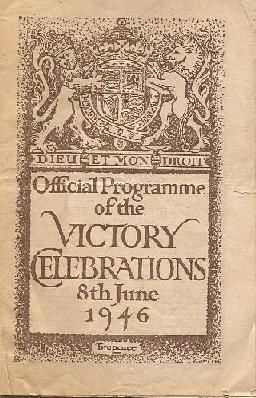On 8 June the UK officially celebrated the Allied victory over Nazi Germany and Japan. As early as 1 November 1945, Prime Minister Clement Attlee formed a committee to plan for celebration, headed by Home Secretary James Chuter-Ede. A military parade and fireworks were the headline acts. The parade was attended by most of the British allies including Belgium, Brazil, China, Czechoslovakia, France, Greece, Luxembourg, the Netherlands, and the United States. The USSR, Yugoslavia, and Poland refused to participate.
The "Polish question" was a delicate issue. Hundreds of thousands of Poles made up a significant part of the Allied forces, but the only squadron invited to the parade was the one named after Tadeusz Kosciuszko. Its commanders flatly refused to participate, since other units of the Polish army, the fourth largest army in Europe during World War II, were not invited. No official reason was given. The pro-Soviet government in Warsaw was invited to send a platoon of standard-bearers to represent Poland, but representatives of the units who fought under British command were not invited (the British command was in charge of more than 200,000 soldiers of the Polish army in the West).
British veterans, representatives of the Royal Air Force, a number of MPs, and even Winston Churchill himself objected to this decision, calling it offensive for the Poles who fought on the side of Britain. Twenty-five Polish fighter pilots, General Kopanski (chief of staff of the Polish armed forces), and Polish air force officers received last minute invitations – but all declined. The Polish government did not send a delegation, alleging that emigrant pilots had been invited. As a result, Polish forces were not represented at the parade.
The parade opened with a procession of chiefs of staff, along with the Allied Supreme Commanders, followed by a mechanised column that marched from Regent's Park to Tower Hill and back. The column consisted of more than 500 vehicles and was over four miles long. The flags of the allied nations were carried by the honour guard. The air parade consisted of 300 aircraft. At night, the royal family sailed down the Thames on a barge and were greeted by thousands of Londoners from the banks. Then the massive fireworks lit up London’s skies, while people danced throughout the night.
























